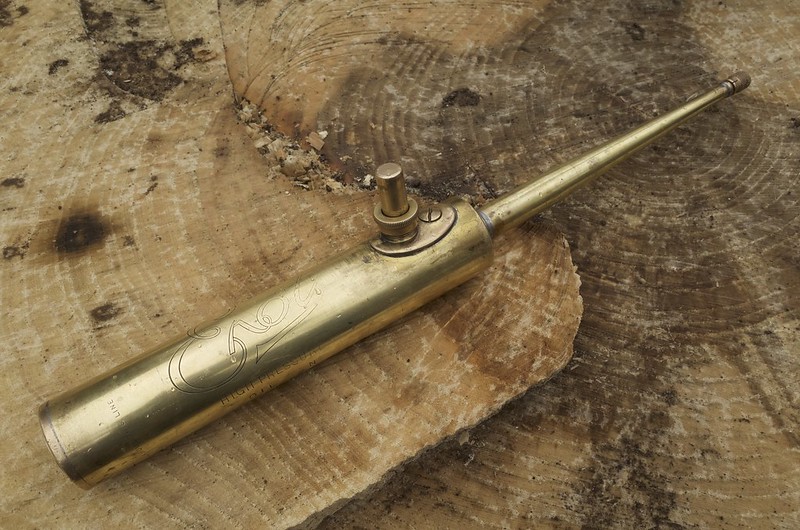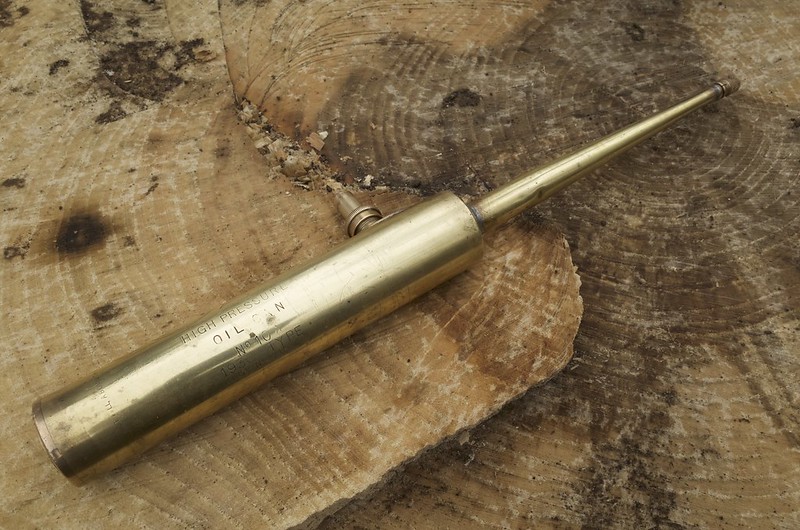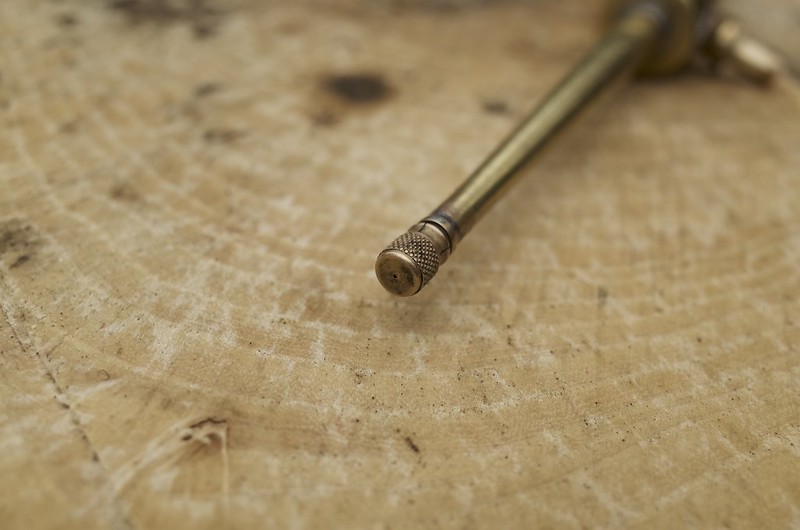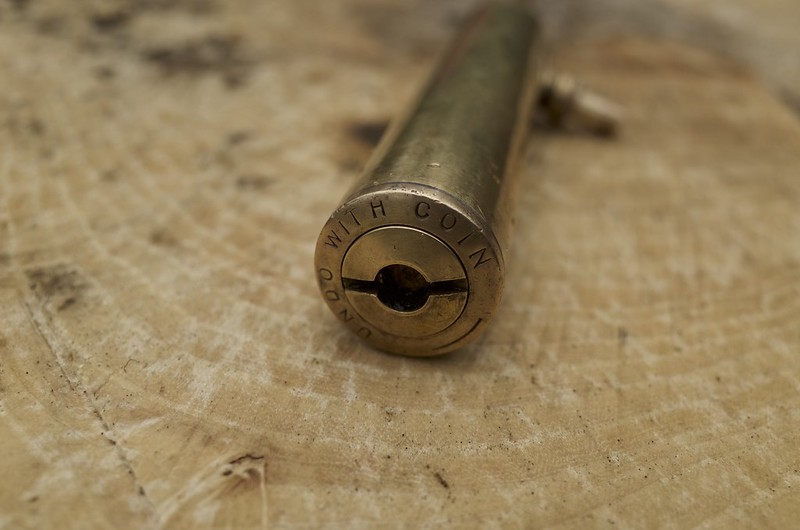Rhyolith
Established Member
 Enots High Pressure Oil Can by Rhyolith, on Flickr
Enots High Pressure Oil Can by Rhyolith, on Flickr Enots High Pressure Oil Can by Rhyolith, on Flickr
Enots High Pressure Oil Can by Rhyolith, on FlickrI got this because it looked like it would polish up well (which it has!) and was made by my favourite oil can maker, Benton and Stone of Birmingham (or Enots).
It seems to be made to squirt the oil over a distance, I have tried it with water and it goes several metres! I assume this would be useful for getting oil in some place you cannot physically reach? It has a very fine screw on nozzle, though it still squirts a long way without it! So I assume this is more for quantity control than anything.
 Enots High Pressure Oil Can by Rhyolith, on Flickr
Enots High Pressure Oil Can by Rhyolith, on FlickrAs its almost entirely made of brass (the spring for the pump is the only thing I can find that is not brass!) I am assuming its pretty old? Just because not much brass seems to have been used more recently.
This is what the back looks like. The walls of the can are quite thick.
 Enots High Pressure Oil Can by Rhyolith, on Flickr
Enots High Pressure Oil Can by Rhyolith, on Flickr



